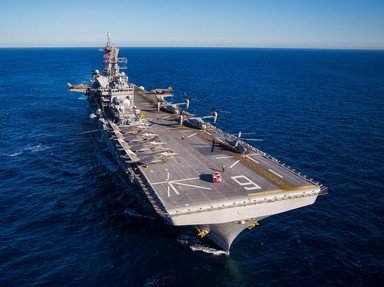Quiz Answer Key and Fun Facts
1. Douglas MacArthur followed in his father's footsteps when he was appointed Army Chief of Staff to the Philippines and later he became Chief Military advisor to the government. When he was recalled to active duty on the eve of the Pacific war with the rank of Major General he was given 4 stars. How old was he?
2. When he heard of the surprise attack on Pearl Harbour MacArthur placed all his forces on full alert and dispatched a force of B 17 bombers to hit Japanese bases on nearby Formosa.
3. The strategic position of the Filipino-American force was now hopeless and the Joint Chiefs back in Washington had written off the Philippines as a lost cause. MacArthur had set up his HQ on the fortress island of Corregidor situated in Manila Bay just off the tip of the Bataan peninsular. Because of the high profile he now had with the public due to the regular news bulletins portraying the heroic defence in the face of overwhelming odds his command was conducting in the face of the enemy Roosevelt determined that he should not fall into enemy hands. The only way he would leave his command was by direct Presidential order and this was duly issued. How was MacArthur evacuated from Corregidor?
4. "I came through, and I shall return." This statement which burst upon a world desperate for some good news in those dark days of early 1942 was the first inkling that MacArthur had left the Philippines and was now in Australia. Where was he when he made this famous statement?
5. "Bob, take Buna or don't come back alive." MacArthur delivered this emphatic instruction to his newly arrived field commander General Robert Eichelberger after the failure of the inexperienced US 32nd Infantry to take the strongly fortified position. Where is Buna?
6. Learning the lessons of the costly Buna/Gona operation MacArthur endorsed a plan to bypass the heavily fortified Japanese bastion at Rabaul making the most of his growing air power and amphibious capabilities. What was the name given to this plan?
7. MacArthur ordered the invasion of Leyte for which of these reasons:
8. "People of the Philippines: I have returned" began a radio broadcast MacArthur made from his flagship USS Nashville off the coast of Leyte.
9. MacArthur lived up to his moniker 'Dugout Doug' by directing his campaigns from Head Quarters well behind enemy lines.
10. After the invasion of Luzon and recapture of Manila in March 1945 MacArthur ordered dozens of amphibious invasions of islands in the southern Philippines and eastern Indonesia on his own authority
Source: Author
mstanaway
This quiz was reviewed by FunTrivia editor
gtho4 before going online.
Any errors found in FunTrivia content are routinely corrected through our feedback system.

